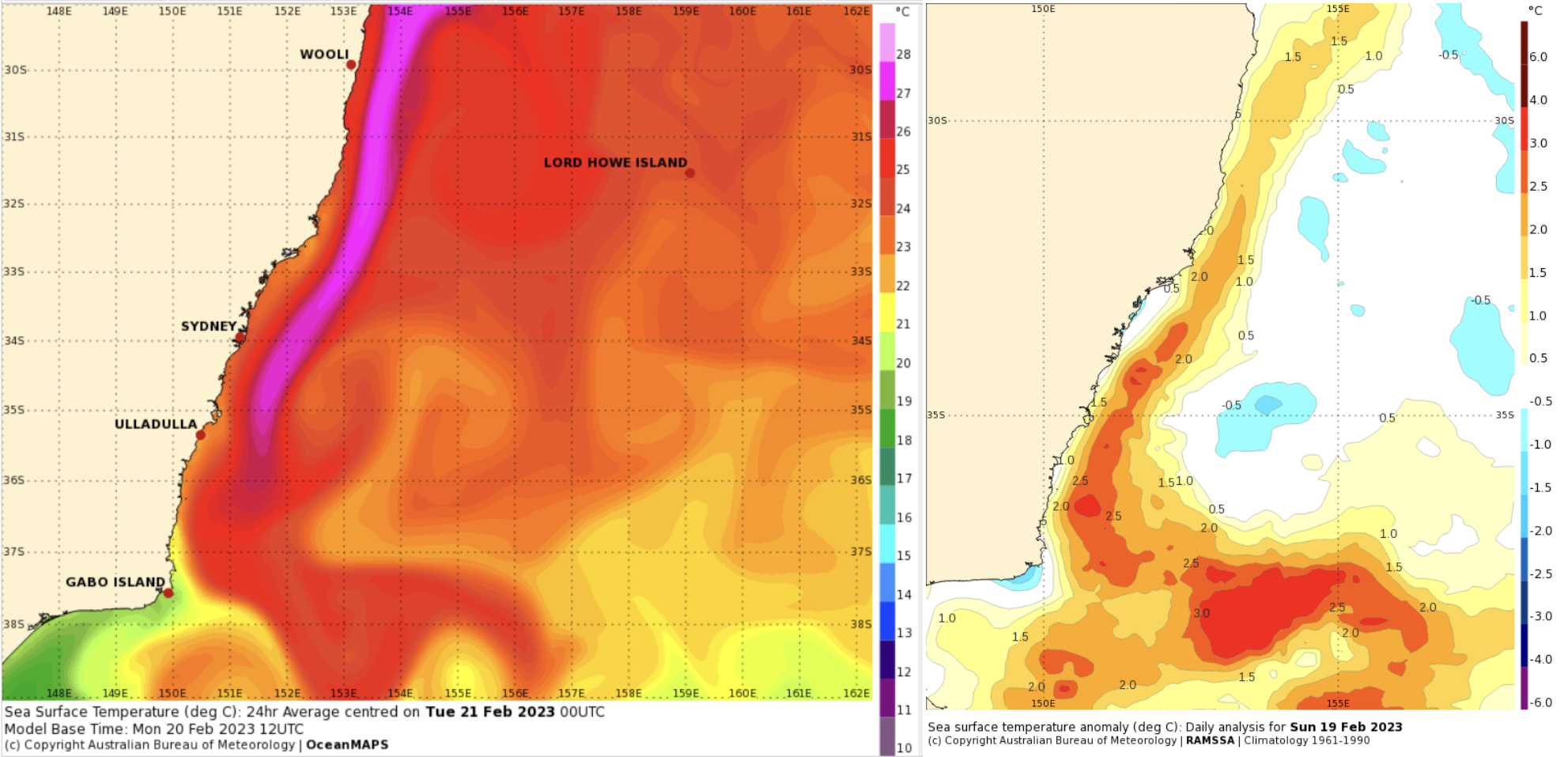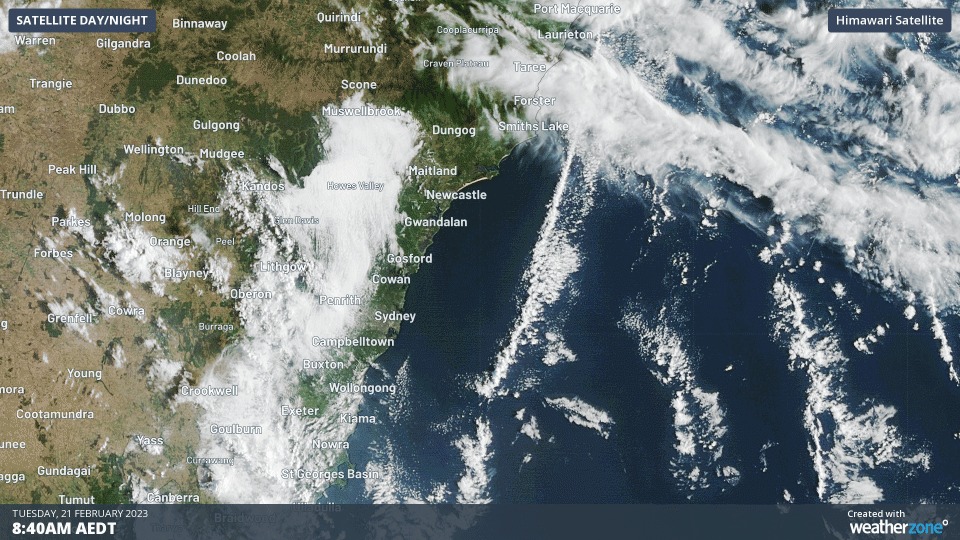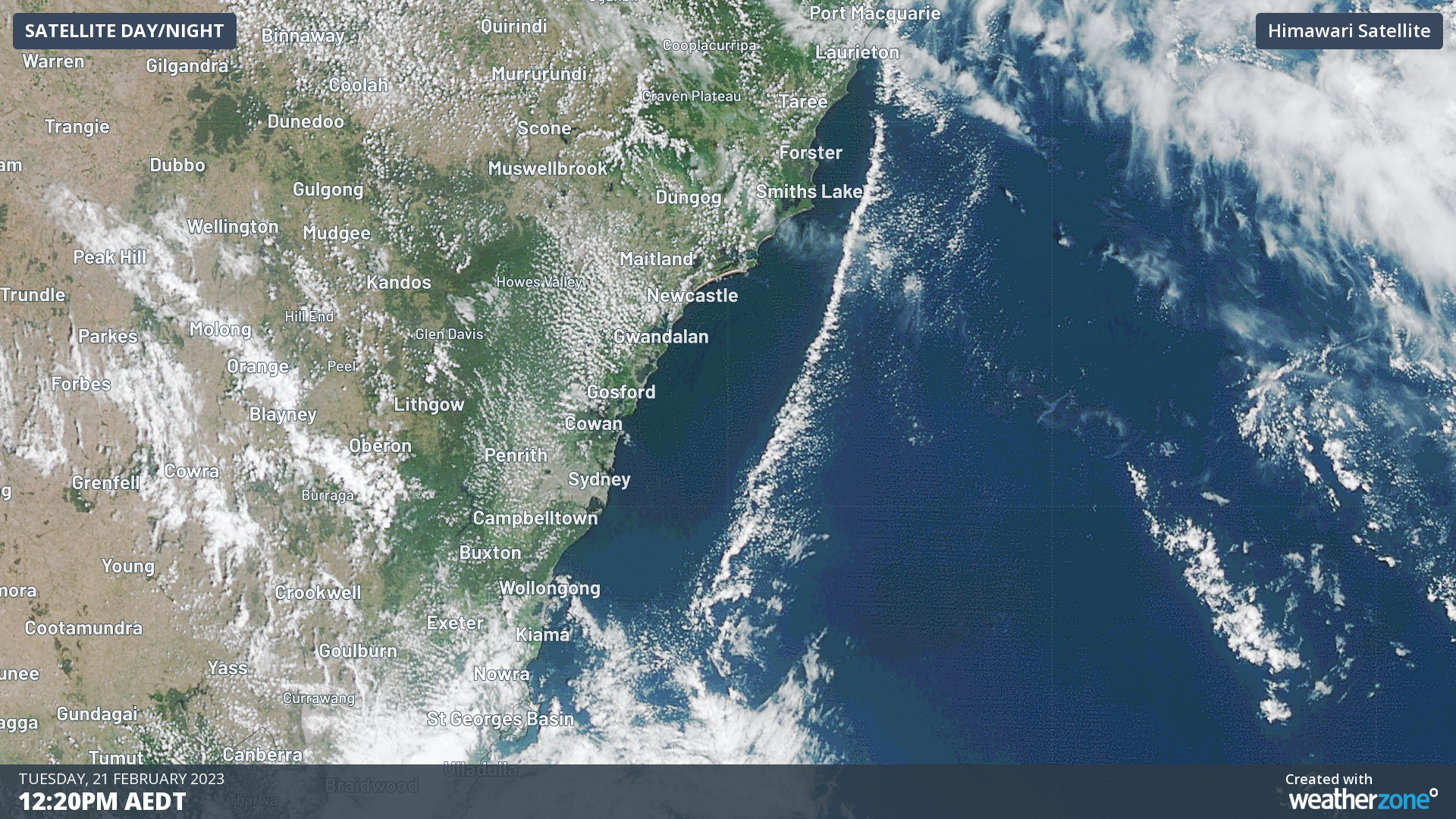A roll cloud has been spotted following the East Australia Current (EAC) down the NSW coast this morning, making use of near–record high ocean temperatures.
The EAC is one of the world’s major warm water ocean currents that transports water from the equator to the Southern Ocean. Made famous by the movie “Finding Nemo”, many marine species including fish, turtles, sharks and whales use this current to navigate down the Australian east coast.
Helped by this summer’s La Niña and persistent easterly winds, the EAC is flowing straight down the coast, making waters just off the coast around 1.5 – 3.0°C higher than normal.
 Image: SST off the NSW Coast, absolute values on the left, anomalies from average on the right. Source BoM
Image: SST off the NSW Coast, absolute values on the left, anomalies from average on the right. Source BoM
Since February and March are the months when Sea Surface Temperatures (SSTs) peak, waters are near record values, especially off the Eden Coast.

Image: Turtles weren’t the only thing swimming down the EAC this morning
This morning’s roll cloud was a string of cumulus clouds making use of the high temperatures and humidity right over the EAC. They were seen ‘flowing’ to the south with northerly winds.
Later on Tuesday and Wednesday, a southerly change will move up the coast, with a small coastal trough forming. This system is expected to bring moderate to occasionally heavy rain and some thunderstorms to the Sydney, Hunter and Mid North Coast areas, likely tapping into the extra moisture around the EAC.

Image: Forecast rainfall to 11am Thursday from ECMWF
DTN APAC offers an array of marine services to help your business, whether its on land, near-coast or in deep water. To find out more please visit our website or email us at apac.sales@dtn.com.






